#thunbergia grandiflora soil
Text
Thunbergia
The Thunbergia plants are prized by plant enthusiasts & gardeners for their lovely flowers & beautiful foliage. This thunbergia plant named after the Sweden Botanist Carl Peter Thunberg for his immense work in the documentation of Thunbergia plant species.

Plant Growth Habit
This plants are excellent creepers & flowering plants belongs to the Acanthaceae family with vibrant color flowers. This plant commonly named as clock vine & sky flower.

Sky Flower
The attractive sky flower plants contain 100+ plant varieties. Flower colors are blue, white, orange & yellow. This plant has a bushy & semi-climbing structure with a woody stem. Feathery flowers appear with yellow or center. In addition to this
it is fast growing plant that reaches up to a height of 6ft from the ground.
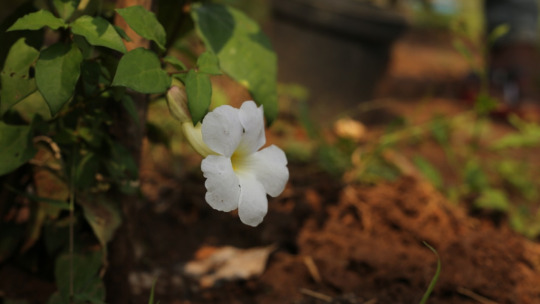
Clock Vine
The clock vine plant's popular varieties are thunbergia grandiflora, thunbergia erecta, natalensis, alata & dwarf varities.

Thunbergia grandiflora
The grandiflora plants are native to India with large leaf foliage with lavender color flowers. Long roots with deep tap root system. It comes under annual plants.
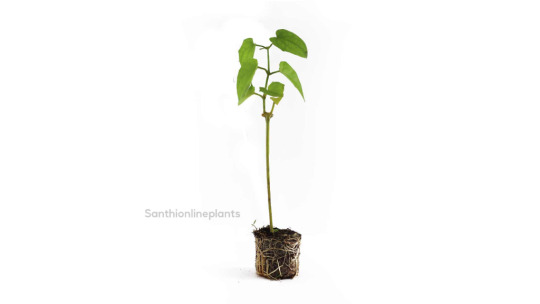

Thunbergia natalensis
It is fast growing creeper plant with white & light blue colored flowers. And the plants are native to Africa. Thunbergia natalensis has trumpet-shaped flowers that are commonly called natal blue & natal white flowers.

Thunbergia erecta
It is a twinning erect perennial shrub with ovate dark green leaves & velvety purple flowers. It is also rapidly growing creeper plants.

Soil
The Bush clock vine plant loves to grow in well-drained soil rich in organic matter. These plants tolerate a wide range of soil but avoid growing in heavy clay soils.

Benefits
These bush clock vine thunbergia plants are great for foundations, borders, beds, hedges & other landscape values.
There are no serious pest, disease & nematode issues for this creeper plant.
The Thunbergia erecta plants used in the treatment of anxiety, depression & insomnia issues.
Bush clock vine has anti-oxidant & anti-inflammatory properties.

The creeper plants grow on walls, trellises, fences, and other plants. And they are popular in gardens as they add visual interest and provide good greenery look.
There is no alternate for Green so far!
#Thunbergia grandiflora#The grandiflora plants are native to India with large leaf foliage with lavender color flowers. Long roots with deep tap root system. It co#thunbergia grandiflora#Thunbergia natalensis#It is fast growing creeper plant with white & light blue colored flowers. And the plants are native to Africa. Thunbergia natalensis has tr#thunbergia natalensis#Thunbergia erecta#It is a twinning erect perennial shrub with ovate dark green leaves & velvety purple flowers. It is also rapidly growing creeper plants.#thunbergia erecta#Soil#The Bush clock vine plant loves to grow in well-drained soil rich in organic matter. These plants tolerate a wide range of soil but avoid g#thunbergia grandiflora soil#Potting Mix- Garden soil+30-40% compost +steamed bone meal +20% of cocopeat if needed alone.#steamed bone meal for clock vine#Water Requirement#Watering the plants regularly helps to grow healthy plants means keeping the soil moist. But the sky flower plants cannot tolerate waterlog#watering for sky flower#Sunlight#The bush clock vine plant thrives well in full direct sunlight with partial shade.#clock vine#Pot Size#This creeper plant requires a pot size of 6-8'' while planting. After one of planting change the pot size to 12'' with good drainage holes.#sky flower poting#Propagation#The thunbergia varieties are easily propagated through stem cuttings. Select the non-flowering#healthy stem and make a clean cut just below a node. Gently remove the lower leaves from the plants. And place the plant cuttings in a plan#thunbergia grandiflora propagation#Pruning#Regular pruning helps to keep the plants in a compact structure.#pruning of sky flower
0 notes
Text
Thunbergia
The Thunbergia plants are prized by plant enthusiasts & gardeners for their lovely flowers & beautiful foliage. This thunbergia plant named after the Sweden Botanist Carl Peter Thunberg for his immense work in the documentation of Thunbergia plant species.

Plant Growth Habit
This plants are excellent creepers & flowering plants belongs to the Acanthaceae family with vibrant color flowers. This plant commonly named as clock vine & sky flower.

Sky Flower
The attractive sky flower plants contain 100+ plant varieties. Flower colors are blue, white, orange & yellow. This plant has a bushy & semi-climbing structure with a woody stem. Feathery flowers appear with yellow or center. In addition to this
it is fast growing plant that reaches up to a height of 6ft from the ground.

Clock Vine
The clock vine plant's popular varieties are thunbergia grandiflora, thunbergia erecta, natalensis, alata & dwarf varities.

Thunbergia grandiflora
The grandiflora plants are native to India with large leaf foliage with lavender color flowers. Long roots with deep tap root system. It comes under annual plants.

Thunbergia natalensis
It is fast growing creeper plant with white & light blue colored flowers. And the plants are native to Africa. Thunbergia natalensis has trumpet-shaped flowers that are commonly called natal blue & natal white flowers.

Thunbergia erecta
It is a twinning erect perennial shrub with ovate dark green leaves & velvety purple flowers. It is also rapidly growing creeper plants.

Soil
The Bush clock vine plant loves to grow in well-drained soil rich in organic matter. These plants tolerate a wide range of soil but avoid growing in heavy clay soils.

Benefits
These bush clock vine thunbergia plants are great for foundations, borders, beds, hedges & other landscape values.
There are no serious pest, disease & nematode issues for this creeper plant.
The Thunbergia erecta plants used in the treatment of anxiety, depression & insomnia issues.
Bush clock vine has anti-oxidant & anti-inflammatory properties

The creeper plants grow on walls, trellises, fences, and other plants. And they are popular in gardens as they add visual interest and provide good greenery look.
There is no alternate for Green so far!

Thunbergia creeper plants
Blog Created By: www.santhionlineplants.com
#thunbergia natalensis#Thunbergia erecta#It is a twinning erect perennial shrub with ovate dark green leaves & velvety purple flowers. It is also rapidly growing creeper plants.#thunbergia erecta#Soil#The Bush clock vine plant loves to grow in well-drained soil rich in organic matter. These plants tolerate a wide range of soil but avoid g#thunbergia grandiflora soil#Potting Mix- Garden soil+30-40% compost +steamed bone meal +20% of cocopeat if needed alone.#steamed bone meal for clock vine#Water Requirement#Watering the plants regularly helps to grow healthy plants means keeping the soil moist. But the sky flower plants cannot tolerate waterlog#watering for sky flower#Sunlight#The bush clock vine plant thrives well in full direct sunlight with partial shade.#clock vine#Pot Size#This creeper plant requires a pot size of 6-8'' while planting. After one of planting change the pot size to 12'' with good drainage holes.#sky flower poting#Propagation#The thunbergia varieties are easily propagated through stem cuttings. Select the non-flowering#healthy stem and make a clean cut just below a node. Gently remove the lower leaves from the plants. And place the plant cuttings in a plan#thunbergia grandiflora propagation#Pruning#Regular pruning helps to keep the plants in a compact structure.#pruning of sky flower#Fertilizer#Application of any organic compost monthly once or twice around the plants helps to grow bushy.#compost for thunbergia#Benefits#These bush clock vine thunbergia plants are great for foundations
0 notes
Text
Thunbergia
The Thunbergia plants are prized by plant enthusiasts & gardeners for their lovely flowers & beautiful foliage. This thunbergia plant named after the Sweden Botanist Carl Peter Thunberg for his immense work in the documentation of Thunbergia plant species.
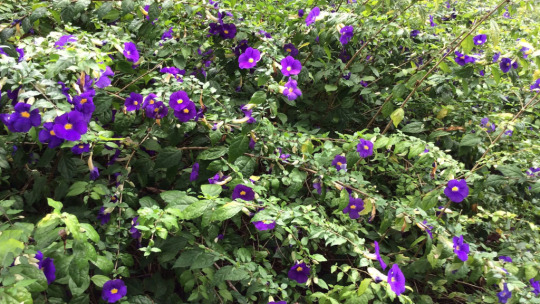
Plant Growth Habit
This plants are excellent creepers & flowering plants belongs to the Acanthaceae family with vibrant color flowers. This plant commonly named as clock vine & sky flower.
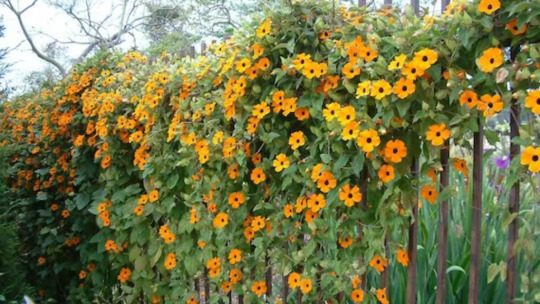
Sky Flower
The attractive sky flower plants contain 100+ plant varieties. Flower colors are blue, white, orange & yellow. This plant has a bushy & semi-climbing structure with a woody stem. Feathery flowers appear with yellow or center. In addition to this
it is fast growing plant that reaches up to a height of 6ft from the ground.

Clock Vine
The clock vine plant's popular varieties are thunbergia grandiflora, thunbergia erecta, natalensis, alata & dwarf varities.

Thunbergia grandiflora
The grandiflora plants are native to India with large leaf foliage with lavender color flowers. Long roots with deep tap root system. It comes under annual plants.
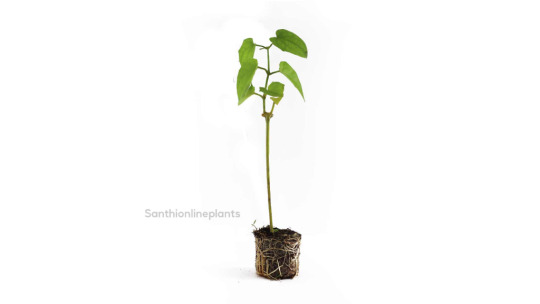
Thunbergia natalensis
It is fast growing creeper plant with white & light blue colored flowers. And the plants are native to Africa. Thunbergia natalensis has trumpet-shaped flowers that are commonly called natal blue & natal white flowers.

Thunbergia erecta
It is a twinning erect perennial shrub with ovate dark green leaves & velvety purple flowers. It is also rapidly growing creeper plants.

Soil
The Bush clock vine plant loves to grow in well-drained soil rich in organic matter. These plants tolerate a wide range of soil but avoid growing in heavy clay soils.

Thunbergia creeper plants
Blog Created By: www.santhionlineplants.com
#w. This plant has a bushy & semi-climbing structure with a woody stem. Feathery flowers appear with yellow or center. In addition to this#it is fast growing plant that reaches up to a height of 6ft from the ground.#sky flower#Clock Vine#The clock vine plant's popular varieties are thunbergia grandiflora#thunbergia erecta#natalensis#alata & dwarf varities.#clock vine#Thunbergia grandiflora#The grandiflora plants are native to India with large leaf foliage with lavender color flowers. Long roots with deep tap root system. It co#thunbergia grandiflora#Thunbergia natalensis#It is fast growing creeper plant with white & light blue colored flowers. And the plants are native to Africa. Thunbergia natalensis has tr#thunbergia natalensis#Thunbergia erecta#It is a twinning erect perennial shrub with ovate dark green leaves & velvety purple flowers. It is also rapidly growing creeper plants.#Soil#The Bush clock vine plant loves to grow in well-drained soil rich in organic matter. These plants tolerate a wide range of soil but avoid g#thunbergia grandiflora soil#Potting Mix- Garden soil+30-40% compost +steamed bone meal +20% of cocopeat if needed alone.#steamed bone meal for clock vine#Water Requirement#Watering the plants regularly helps to grow healthy plants means keeping the soil moist. But the sky flower plants cannot tolerate waterlog#watering for sky flower#Sunlight#The bush clock vine plant thrives well in full direct sunlight with partial shade.#Pot Size#This creeper plant requires a pot size of 6-8'' while planting. After one of planting change the pot size to 12'' with good drainage holes.#sky flower poting
0 notes
Text
I live in a pretty magical place. Florida gets a bum rap for being the redheaded stepchild of the South. We are like flypaper to crazy people (my friends from Up North regularly refer me to this gem: Florida Man), old people (Heaven’s Waiting Room), and people who are itching to get drunk and sunburned (I can’t believe this place is still around).
My little corner of Florida, however, is actually special. Though Señor Frogs is a bit of a hike, the freshwater marsh that occupies our backyard, or ‘savannas,’ stretch more than 10 miles from Ft. Pierce to Jensen Beach. This preserve is the largest and most intact remnant of Florida’s east coast savannas. From the Florida State Parks site (FSP): “During the Second Seminole War (1835-1842), Lt. Colonel Benjamin Pierce first used the term ‘savannah’ to describe a series of ponds and marshes found here. In 1879, Captain Thomas Richards planted the first pineapples, grown from cuttings he transported from Key West. The plants thrived in the sandy, well-drained soils and dozens of plantations appeared along the Atlantic Ridge. From 1895 to 1920, Jensen Beach was known as the ‘Pineapple Capital of the World.’ The park encompasses more than 6,000 acres and joined the Florida Park Service in 1977.” Pretty awesome, no? There are those sneaky pineapples cropping up once again!
We have all sorts of amazing flora and fauna (literally) in our backyard. As a native Floridian, the sight of palm trees, pine trees and your “greatest hits” plantings of the planned communities are familiar. I grew up on a farm, my mom loves trees, but until I had my own little patch of dirt, gardening had never really called to me. My son was very little when I started to see the need to fence in our yard (part of the Savannas charm is that you are on nature’s doorstep, but that also means alligators are, at times, your neighbors. Nicer than some other neighbors, I might add!), but I didn’t want to obscure our beautiful view with a white picket situation. Our house is architecturally inspired by Frank Lloyd Wright, so in that vein, I wanted something that would blend in with our surroundings, as well as keep out the majority of the critters.
(Thunbergia grandiflora is an evergreen vine in the family Acanthaceae.[2] Common names include Bengal clockvine, Bengal trumpet, blue skyflower, blue thunbergia, blue trumpetvine, clockvine, skyflower and skyvine.)
On the farm growing up, we would use diamond wire to fence in the colts to keep them from slipping through the three board horse fence that surrounded our property. This fencing is strung together by round posts at three foot intervals and is, in my mind, the perfect setup for a natural trellis. As the fence began to take shape, the overall picture of my landscaping started to grow in my mind. Summers of trips to the Abacos must have made an impression because all I could think about was giant trellises of bougainvillea. I would go to Home Depot, with my little people in tow, and buy 5 gallon pots of bougainvillea when the price was right. It did not take me long to become obsessed. I delved further into the world of native Floridian plants: Native Plant Society. There is a lot to learn! I have a rather large area to fill, so I started off my landscaping plan with the idea of making a giant butterfly garden.
Butterflies love to land on our bougainvillea trellis
If you have small children or are a nature lover (or like me, fall under both umbrellas), incorporating larval and host plants to attract butterflies (and other pollinators) to your yard is a labor of love that will pay big dividends for years to come. In addition to having “floating flowers”, as my daughter so poetically describes butterflies, dancing around your yard, you will also be doing your part to prevent monoculture and improve the overall tableau of flora that will help our pollinators thrive. Here is a great resource for starting your garden of native plants: Gardeners Play A Role In Creating Wildlife Corridors.
(Lantana comes in many colors and pollinators LOVE IT!)
The biggest boon to my butterfly project has definitely been interspersing milkweed plants throughout my existing landscaping. Now! Milkweed is a fascinating plant with over 140 known species (Milkweed: The Most Interesting Plant IN THE WORLD). I’ve primarily planted yellow and red varietals, which continue to surprise me! They get to be really leggy, can get to be at least 3′-4′ tall, and they are incredibly prolific- which means once you plant a few and they go to seed- WATCH OUT- you will have milkweed popping up all over your yard (if you like a more manicured look, they are easy to transplant). I found a fun varietal called “Globe” that gets really tall and sprouts these giant alien egg-sac looking seed pods that burst open when they ready. SO COOL.
Butterflies and pollinators alike love coneflowers and vibrantly colored flowers; so this is a lovely dual purpose aspect of planting with pollinators in mind. Adding color to an otherwise rather green landscape is so much fun, especially when you know what you are planting will only augment the overall health of your ecosystem.
(You keenly-eyed people might notice the milkweed planted next to the red pentas and next to the coneflowers! I’ve done this all over our yard- the bushy, red flowers attract the butterflies and pollinators, and the milkweed is where they lay their eggs and food for the baby caterpillars.)
Vibrantly colored, delicious smelling popcorn cassia (Senna didymobotrya) are super tropical and interesting set piece to add visual interest in your yard. I’ve got mine planted next to some huge dark purple crinum lillies and also in another area, close to some coral honeysuckle that has been grafted from a vine to a small ornamental tree.
There are truly so many larval and host plants to attract butterflies and pollinators; it can be somewhat overwhelming to a neophyte gardener. This landscaping project has taken me years and continues to take shape as my plants begin to mature. I’ve added a lot of fun climbing vines to my trellis/fence because the bougainvillea has established itself (it likes dry roots, but we can have a lot of water, depending on the time of year) and the climbers will attach to anything! Below are photos of my four different varietals of passion vines (the red- passiflora miniata, the purple- passiflora incarnata, the third is the Lady Margaret- Passifloraceae, and the corky stem- Passiflora suberosa) and a visual of just how prolific they are! They use the little curly vines to grab on to things and pull themselves outward:
My advice is try not to get too overwhelmed; there are so many plants to choose from and once you start seeing the butterflies, it’s pretty satisfying. Get started with a couple of milkweed plants and go from there. One of our local nurseries has classes that help gardeners and non-gardeners alike get started with their pollinator gardens (Pinder’s Nursery). This handy table is from their website:
FLORIDA NECTAR PLANTS “Butterfly Attractors”
Plant 3/4 to 2/3 of your garden with nectar plants
Common Name Botanical Name
Key
Annuals/Perrenials
Yellow butter cup Turnera umifolia Cigar plant Cuphea ignea (Sp) (HB) Dianthus Dianthus spp. (Sp) Gaillardia Gaillardia spp (N) (Y) Guara Guara lindheimeri (Y) Bulbine Bulbine fructens (Y) Heliotrope Heliotropium amplexicaule (Sp) Hummingbird Mexican mint Agastache rupestris (HB) Lavendar Lavendola (Sp) Lemon shrub marigold Tagetes lemmonii (Sp) Mexican or False heather Cuphea hyssopifolia (Y) Mexican or Scarlett milkweed Asclepias curassavica (Y) Pentas Pentas lanceolata (shade) (Y) Porterweed Stachytarpheta spp (Sp,F) (HB) Bush Daisy Euryops pectinatus (Y) Tickseed Coreopsis leavenworthii (N) (Sp,Su) Bog sage Salvia uliginosa (Sp-F) Hot Lips sage Salvia Microphylla (Y) Hummingbird sage Salvia coccinea, Salvia spathacea (Y) (HB) Indigo spires Salvia farinanea (Y) Mexican sage Salvia leucartha (Sp,F) Red shrimp Justicia brandegeana (Y) Lantana Lantana camara (sterile form) (Sp,F) Purple Weeping Lantana Lantana montevidensis (Y)
Vines
Honeysuckle lonceri app (Sp, Su) Florida flame Pyrostegia venusta (Sp)
Shrubs and Trees
Butterfly bush Buddleia davidii (Sp, Su) Dwarf powder puff Calliandra emarginata Firespike Odontonema strictum (Shade) (N) (HB) (F,W) Firebush Hamelia patens (partial shade) (N) (HB) Golden dewdrop Duranta repens (Sp-F) Plumbago Plumbago auriculata (sun to partial shade) (Y) Wild coffee Psychotria nervosa (prefers shade) (N) (Sp)
Key: N=Native, HB=Hummingbird, Sp=Spring blooming, Su=Summer blooming, F=Fall blooming, W=Winter blooming Y=Year round blooming
Just get started. The butterflies will thank you!
Butterfly Post I live in a pretty magical place. Florida gets a bum rap for being the redheaded stepchild of the South.
0 notes
Text
Thunbergia
The Thunbergia plants are prized by plant enthusiasts & gardeners for their lovely flowers & beautiful foliage. This thunbergia plant named after the Sweden Botanist Carl Peter Thunberg for his immense work in the documentation of Thunbergia plant species.

Plant Growth Habit
This plants are excellent creepers & flowering plants belongs to the Acanthaceae family with vibrant color flowers. This plant commonly named as clock vine & sky flower.

Sky Flower
The attractive sky flower plants contain 100+ plant varieties. Flower colors are blue, white, orange & yellow. This plant has a bushy & semi-climbing structure with a woody stem. Feathery flowers appear with yellow or center. In addition to this
it is fast growing plant that reaches up to a height of 6ft from the ground.
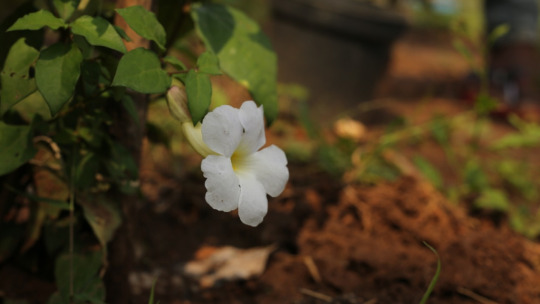
Clock Vine
The clock vine plant's popular varieties are thunbergia grandiflora, thunbergia erecta, natalensis, alata & dwarf varities.

Thunbergia grandiflora
The grandiflora plants are native to India with large leaf foliage with lavender color flowers. Long roots with deep tap root system. It comes under annual plants.
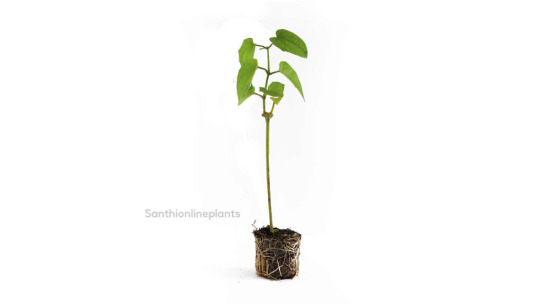
Thunbergia natalensis
It is fast growing creeper plant with white & light blue colored flowers. And the plants are native to Africa. Thunbergia natalensis has trumpet-shaped flowers that are commonly called natal blue & natal white flowers.

Thunbergia erecta
It is a twinning erect perennial shrub with ovate dark green leaves & velvety purple flowers. It is also rapidly growing creeper plants.
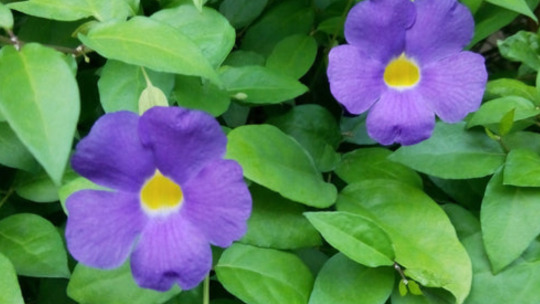
Soil
The Bush clock vine plant loves to grow in well-drained soil rich in organic matter. These plants tolerate a wide range of soil but avoid growing in heavy clay soils.

There is no alternate for Green so far!

Thunbergia creeper plants
Blog Created By: www.santhionlineplants.com
#Thunbergia erecta#It is a twinning erect perennial shrub with ovate dark green leaves & velvety purple flowers. It is also rapidly growing creeper plants.#thunbergia erecta#Soil#The Bush clock vine plant loves to grow in well-drained soil rich in organic matter. These plants tolerate a wide range of soil but avoid g#thunbergia grandiflora soil#Potting Mix- Garden soil+30-40% compost +steamed bone meal +20% of cocopeat if needed alone.#steamed bone meal for clock vine#Water Requirement#Watering the plants regularly helps to grow healthy plants means keeping the soil moist. But the sky flower plants cannot tolerate waterlog#watering for sky flower#Sunlight#The bush clock vine plant thrives well in full direct sunlight with partial shade.#clock vine#Pot Size#This creeper plant requires a pot size of 6-8'' while planting. After one of planting change the pot size to 12'' with good drainage holes.#sky flower poting#Propagation#The thunbergia varieties are easily propagated through stem cuttings. Select the non-flowering#healthy stem and make a clean cut just below a node. Gently remove the lower leaves from the plants. And place the plant cuttings in a plan#thunbergia grandiflora propagation#Pruning#Regular pruning helps to keep the plants in a compact structure.#pruning of sky flower#Fertilizer#Application of any organic compost monthly once or twice around the plants helps to grow bushy.#compost for thunbergia#Benefits#These bush clock vine thunbergia plants are great for foundations#borders
0 notes
Text
Thunbergia
The Thunbergia plants are prized by plant enthusiasts & gardeners for their lovely flowers & beautiful foliage. This thunbergia plant named after the Sweden Botanist Carl Peter Thunberg for his immense work in the documentation of Thunbergia plant species.

Plant Growth Habit
This plants are excellent creepers & flowering plants belongs to the Acanthaceae family with vibrant color flowers. This plant commonly named as clock vine & sky flower.
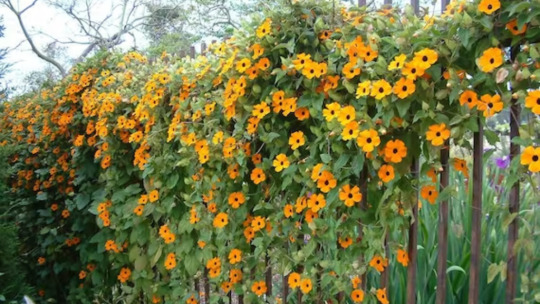
Sky Flower
The attractive sky flower plants contain 100+ plant varieties. Flower colors are blue, white, orange & yellow. This plant has a bushy & semi-climbing structure with a woody stem. Feathery flowers appear with yellow or center. In addition to this
it is fast growing plant that reaches up to a height of 6ft from the ground.

Clock Vine
The clock vine plant's popular varieties are thunbergia grandiflora, thunbergia erecta, natalensis, alata & dwarf varities.

Thunbergia grandiflora
The grandiflora plants are native to India with large leaf foliage with lavender color flowers. Long roots with deep tap root system. It comes under annual plants.
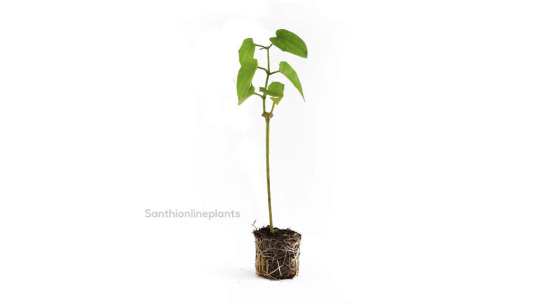
Thunbergia natalensis
It is fast growing creeper plant with white & light blue colored flowers. And the plants are native to Africa. Thunbergia natalensis has trumpet-shaped flowers that are commonly called natal blue & natal white flowers.

Thunbergia erecta
It is a twinning erect perennial shrub with ovate dark green leaves & velvety purple flowers. It is also rapidly growing creeper plants.

There is no alternate for Green so far!

Thunbergia creeper plants
Blog Created By: www.santhionlineplants.com
#Thunbergia natalensis#It is fast growing creeper plant with white & light blue colored flowers. And the plants are native to Africa. Thunbergia natalensis has tr#thunbergia natalensis#Thunbergia erecta#It is a twinning erect perennial shrub with ovate dark green leaves & velvety purple flowers. It is also rapidly growing creeper plants.#thunbergia erecta#Soil#The Bush clock vine plant loves to grow in well-drained soil rich in organic matter. These plants tolerate a wide range of soil but avoid g#thunbergia grandiflora soil#Potting Mix- Garden soil+30-40% compost +steamed bone meal +20% of cocopeat if needed alone.#steamed bone meal for clock vine#Water Requirement#Watering the plants regularly helps to grow healthy plants means keeping the soil moist. But the sky flower plants cannot tolerate waterlog#watering for sky flower#Sunlight#The bush clock vine plant thrives well in full direct sunlight with partial shade.#clock vine#Pot Size#This creeper plant requires a pot size of 6-8'' while planting. After one of planting change the pot size to 12'' with good drainage holes.#sky flower poting#Propagation#The thunbergia varieties are easily propagated through stem cuttings. Select the non-flowering#healthy stem and make a clean cut just below a node. Gently remove the lower leaves from the plants. And place the plant cuttings in a plan#thunbergia grandiflora propagation#Pruning#Regular pruning helps to keep the plants in a compact structure.#pruning of sky flower#Fertilizer#Application of any organic compost monthly once or twice around the plants helps to grow bushy.#compost for thunbergia
0 notes